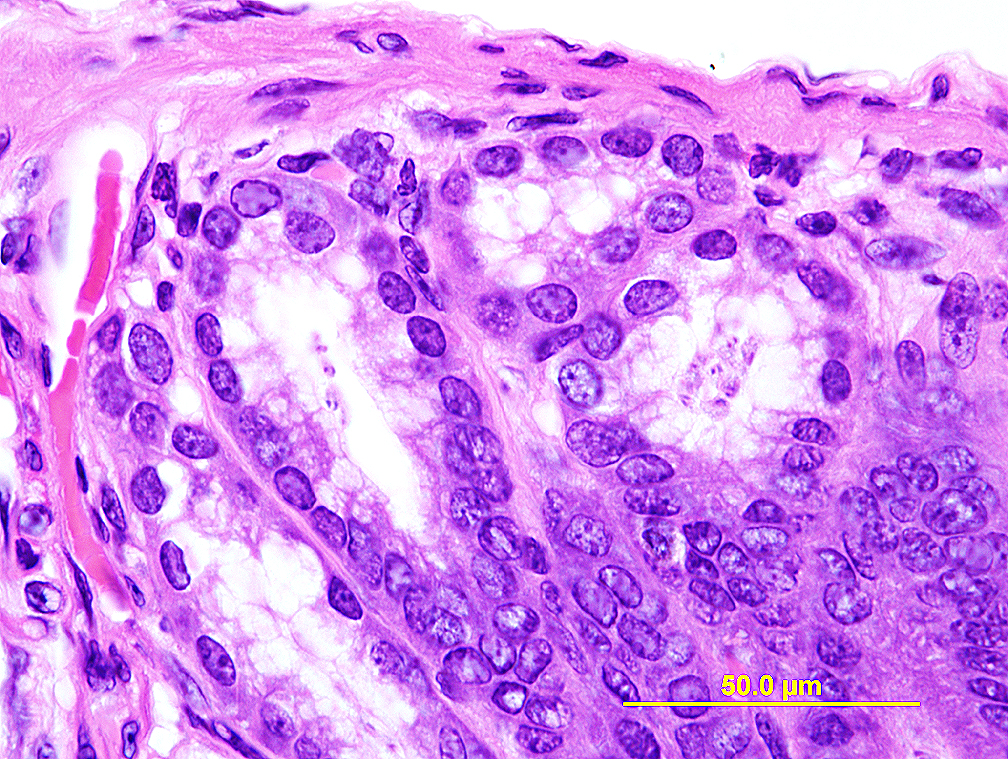
Etiology: Spironucleus muris is a flagellated protozoan that dwells on the small intestinal mucosa.
Incidence: The incidence of infection is common.
Transmission: Ingestion of infective cysts passed in fecal material is the primary mode of transmission.
Distribution: Spironucleus is found primarily in the crypts of the duodenum and pyloric glands. In young animals, luminal protozoa are more numerous.
Clinical Signs: Clinical signs are not usually observed.
Diagnosis: Direct smears of small intestinal contents reveal fast darting protozoa. PCR of feces can also be performed.
Diagnostic Morphology: Trophozoite: 7- 9 x 2- 3 µm, piriform (teardrop)-shaped or carrot-shaped, with 6 anterior flagella, 2 posterior flagella, 2 anterior nuclei and 2 separate axostyles.
